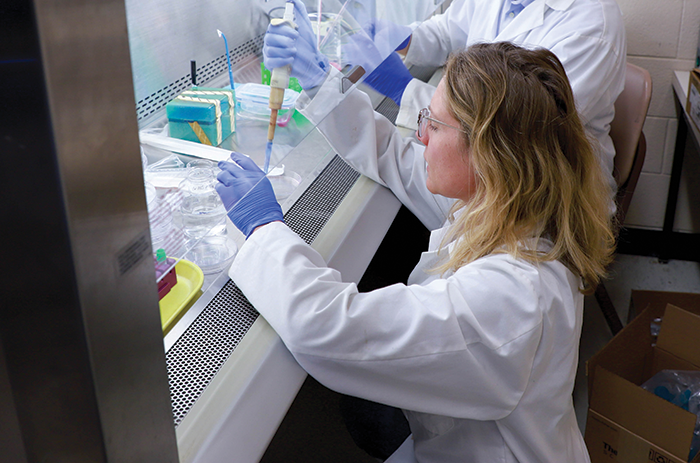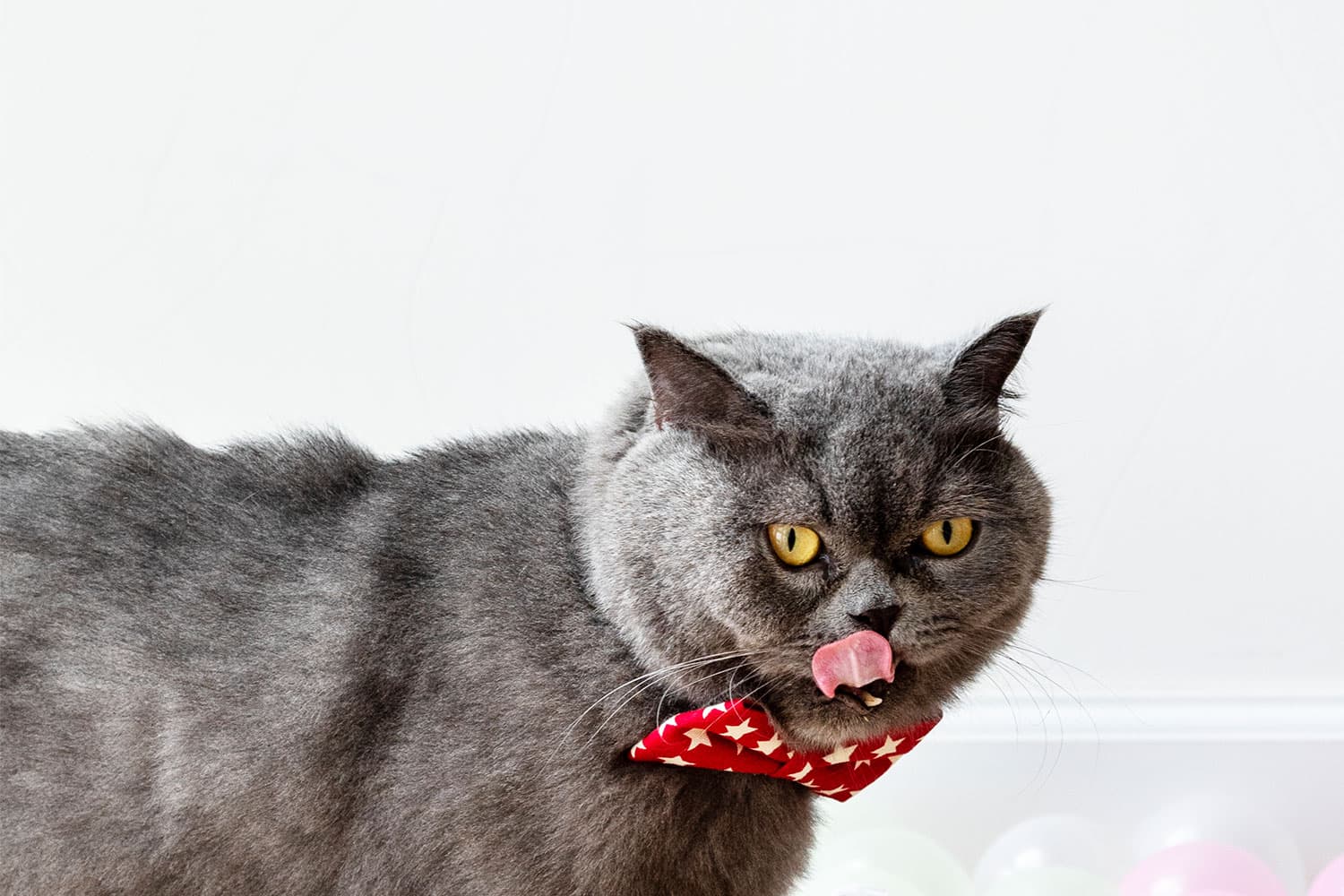Lab-Grown Meat is Coming… to the Pet Food Aisle
Your kitty could soon enjoy meat without harming the environment.
As sci-fi as feeding your cat kibble grown in a laboratory may once have seemed, it’s closer than many realize. Because Animals — an American company that aspires to create pet food without harming animals or the environment — is working to bring the world’s first batch of lab-grown cat food to market as early as 2021.
“We’ve basically pioneered cultured meat in pet food,” said Dr. Shannon Falconer, chief executive officer and co-founder of Because Animals. “[Our product] is just as nutritious as traditionally grown meat, but it does not contain antibiotics. [It’s] without the steroids and growth promoters typically used in animal agriculture.”
In recent years, labs across the world have produced burgers, steaks, seafood, and more, without directly slaughtering a single animal. These products — called lab-grown meat, in vitro meat, cultured meat — are exactly what they claim to be: real meat. Instead of raising animals for slaughter, however, muscle or fat cells are grown in a nutrient-rich broth.
Supporters say cultured meat could help solve a crucial problem: animal agriculture devastates the environment. From soaking up 2,422 cubic giga-metres of water (or 29% of the water used by humanity) every year, to generating 14.5% of global greenhouse gas emissions annually, to fostering antibiotic resistant microbes.
25–30% of animal farming’s environmental impact comes from producing pet food.
Pet food production contributes significantly to these figures. A 2017 paper published in PLOS ONE, a peer-reviewed science journal, found that 25–30% of animal farming’s environmental impact — in terms of land use, water consumption, pesticides, phosphates, and greenhouse gas emissions — comes from producing pet food.
“This isn’t something we can ignore any longer,” said Dr. Ernie Ward, a veterinarian, author, and co-founder of plant-based pet food company Wild Earth. According to Ward, the total greenhouse gas emissions from feeding our pets meat “equals about 14 million car exhausts over a period of a year…[or] 64 million metric tonnes of greenhouse gas emissions.”
And, because pet food has shifted towards more animal protein in recent years, he continued, this figure is growing.
In contrast, research has shown that, by growing meat in the lab, we could reduce animal suffering while lowering the meat industry’s land use, water consumption, and greenhouse gas emissions by over 95% each.

Shannon Falconer at work in the Because Animals lab
On the front lines of lab-grown meat, Because Animals is taking an unorthodox approach by focusing exclusively on pets. In 2019, the company succeeded in creating the world’s first cultured-meat cat treat out of mouse cells, “without harming or hurting a single animal,” said Falconer.
Because Animals sourced the cells from the ears of three mice rescued from a lab and used an anesthetic so the mice would not feel any pain. (The mice now live with one of their research team members.) Then, the team grew these cells in cell medium — a broth rich in nutrients, hormones, and other materials necessary for cell growth.
Traditional cell media controversially source nutrients, minerals, and growth factors from the blood of fetal calves. However, Falconer’s company invented a recipe without any animal products, she said.
After enough cells have grown, the starter batch is moved into a “bioreactor” — a sterile, temperature-controlled vat similar to those used in breweries.
The message we’re trying to convey is that cultured meat is meat, not a meat alternative.
At this step, cells are typically grown on a “scaffold,” so the final product resembles a cut of animal-sourced meat. However, Because Animals works without scaffolds because pets are less picky about their food’s shape. This makes the process faster and cheaper, said Falconer.
Finally, the meat is harvested and mixed with other ingredients. Then, it’s on to the food bowl.
“It will begin to familiarize people, the general customer, with this idea of cultured meat,” said Falconer, who aims to make a first batch of a few hundred cultured cat treats commercially available by the end of 2021. “The message we’re really trying to convey to customers is that cultured meat is meat — it is not a meat alternative.”
Ward agrees. Cultured meat not only presents a timely solution to the pet food problem, it might also quell the cultural “ick factor” associated with lab-grown meat, he said. Some people are distrustful of lab-grown meat, he explained. However, they might feed it to their dog. Then, when cultured meat hits the market for people to consume, it’s more likely to be accepted.
Jacy Reese Anthis, author of The End of Animal Farming and co-founder of the Sentience Institute, a US-based think tank working to prevent the suffering of all sentient beings, including livestock, isn’t so sure.
“In the long run, I think we’ll need cultured pet food. But if I had the option, I would not make it the first one to market,” he said, explaining that introducing cultured meat to consumers as pet food could create negative connotations. People might see it as a lesser alternative to animal meat — a food for pets, not humans.
“I’m much less worried about ending factory farming a few days or weeks earlier than I am about just making sure it’s ended in general, and making sure that there’s not some negative issue with public perception that lasts for decades,” said Anthis. Instead, he argued, cultured meat should be introduced as a high-end product. Once it’s established as a luxury food, it could trickle into more general markets.
Introducing cultured meat to consumers as pet food could create negative connotations.
Ward disagrees. When cultured meat is on the market for both humans and animals, he said, people aren’t going to avoid eating it because it’s in pet food.
“Most pet foods are using beef and poultry,” he said. “And yet, last time I checked, hamburgers and chicken McNuggets are two of the most popular dishes.”
For now, Falconer and her team are working hard to scale up production and optimize their process as they prepare to hit the market. In just a few years, it’s possible your pets will get to enjoy all the meat they can handle — without harming a single animal.
Print Issue: Winter 2021
Print Title: Cultured Kibble
